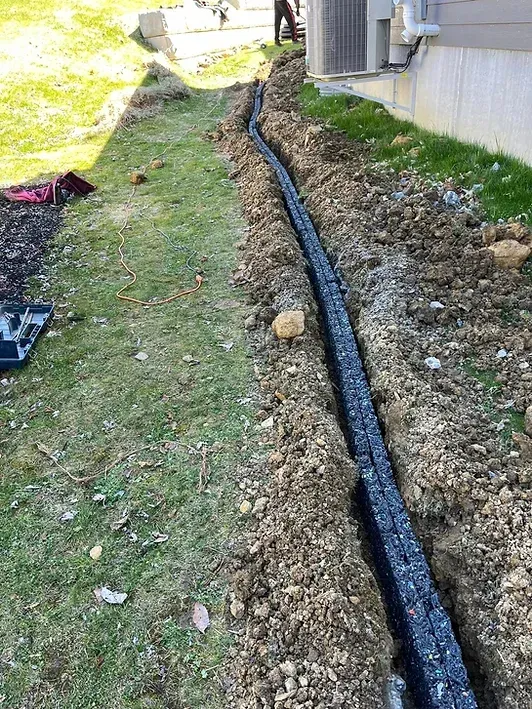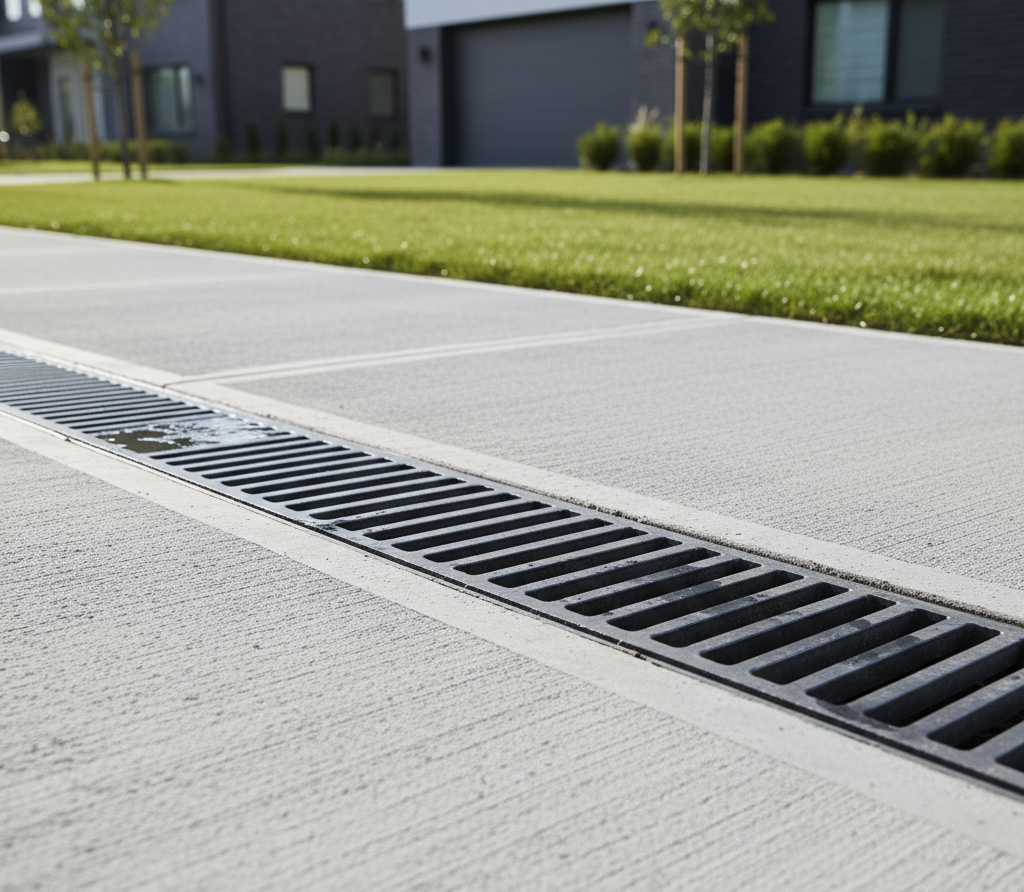Expert Tips for Stabilizing Hillside Erosion in the Bay Area
Hillside erosion poses a significant challenge for many
Bay Area homeowners, where sloped landscapes and seasonal rains combine to cause soil displacement. Without proper erosion control, your property's stability, landscaping, and even foundation can be at risk. Fortunately, Drainage Technology Solutions offers a range of effective strategies, including the innovative HydroBlox drainage system, to help protect and stabilize your hillside.
Understanding Hillside Erosion

Erosion occurs when water runoff displaces soil, particularly on slopes. Heavy rainfall, inadequate drainage, and sparse vegetation can all accelerate erosion. In the Bay Area, where rainy seasons intensify these risks, proactive measures are essential to maintain your property's integrity.
Soil erosion on hillsides doesn't just affect the immediate area; it contributes to broader environmental concerns like water pollution when sediment enters local waterways. Topsoil loss reduces soil fertility and can damage your landscape's ecological balance, affecting everything from plant development to wildlife habitats.
Surface runoff accelerates when rain cannot properly infiltrate soil, especially on compacted soils. The Bay Area's unique climate patterns create perfect conditions for erosion: dry summers that harden soil followed by intense winter rains that wash away vulnerable surfaces. Understanding these patterns is crucial for developing effective erosion control strategies tailored to our region.
Integrated Strategies for Erosion Control
Combining various erosion control methods with advanced drainage solutions like HydroBlox creates a comprehensive approach to hillside stabilization. Here are the most effective strategies:
1. HydroBlox Drainage Panels

HydroBlox panels, made from recycled materials, create channels that direct water away from vulnerable areas. Unlike traditional drainage pipes, HydroBlox doesn't clog and requires minimal maintenance. You can install HydroBlox behind retaining walls, beneath riprap, or alongside vegetation and erosion control blankets to enhance water management and prevent soil erosion.
When properly integrated into your landscape design, HydroBlox helps maintain optimal soil moisture levels – neither too wet nor too dry – creating ideal conditions for plant growth while preventing erosion. These panels work exceptionally well in conjunction with other drainage solutions like French drains or swales to manage stormwater effectively.
2. Erosion Control Blankets
Erosion control blankets stabilize soil while vegetation takes root. These biodegradable mats, made from materials like coconut fiber, jute, or straw, cover exposed soil to reduce the impact of rain and wind. Using erosion control blankets in conjunction with HydroBlox ensures that water is effectively redirected, providing both immediate and long-term slope stability.
For steeper slopes, specialized geotextile blankets offer superior protection against surface runoff while allowing plants to establish. These blankets trap sediment that would otherwise wash away, preserving valuable topsoil and reducing water pollution downstream.
3. Riprap Installation
Riprap involves placing large rocks or stones on slopes to prevent soil movement. The weight and structure of riprap absorb and deflect the energy of flowing water, reducing erosion. Placing HydroBlox beneath riprap enhances water flow control, preventing water from undermining the stones and improving the overall stability of the slope.
For maximum effectiveness, install a filter fabric between the soil and riprap to prevent soil particles from washing through the stones. This combination of techniques creates a robust system that can withstand even intense storm events common in the Bay Area's winter months.
4. Vegetation and Ground Cover
Deep-rooted plants anchor the soil and naturally stabilize slopes. Native grasses, shrubs, and ground covers establish root systems that hold the soil in place. Pairing vegetation with HydroBlox helps manage excess water, preventing oversaturation that can weaken root systems. In the Bay Area, plants like California fescue, Panicum virgatum (switchgrass), and creeping wild rye are excellent choices.
Consider adding pollinator-friendly perennials like Monarda (bee balm) or berry-producing shrubs like Itea virginica that provide wildlife benefits while their extensive root systems stabilize soil. Groundcovers such as Vinca can quickly cover exposed areas, while trees and larger shrubs like Juniper or Pine provide long-term slope stability through their deep root structures.
For areas between established plants, mulch or compost helps retain soil moisture, suppress weeds, and add organic matter to improve soil structure. Cover crops can be used seasonally to protect bare soil between plantings of vegetables or other garden features.
5. Retaining Walls and Terracing

Retaining walls and terraces break up slopes into smaller, more stable sections. By creating level areas, these structures slow down water runoff and reduce soil displacement. Install HydroBlox behind retaining walls to improve drainage, preventing water buildup that can compromise the wall's stability.
Modern landscape design often incorporates tiered gardens with retaining walls, combining beauty with functionality. These terraced areas can host vegetables, herbs, or ornamental plants while controlling erosion. Using proper construction techniques and materials ensures longevity – incorporate drainage channels, proper backfill, and professional engineering for walls exceeding three feet in height.
Advanced Water Management Techniques
Beyond basic erosion control, comprehensive water management systems significantly enhance hillside stability:
Swales and ditches create intentional channels that slow water flow and direct it away from vulnerable areas. These features can be beautifully integrated into your landscape using appropriate plants that thrive in periodically wet conditions.
Drip irrigation delivers water directly to plant roots, avoiding the erosion risks associated with sprinklers or surface watering. This targeted approach conserves water while maintaining plant health, particularly important during drought periods.
Rain gardens capture stormwater runoff in shallow depressions planted with water-tolerant species. These features reduce the volume and velocity of water moving downslope while creating beautiful landscape features that support local wildlife and pollinators.
Soil Conservation Practices
Maintaining soil health is fundamental to erosion prevention, and here are some useful tips to follow:
- Avoid excessive tillage on slopes, as this disrupts soil structure and increases erosion risk. Instead, use no-till gardening methods and add organic matter regularly through compost application.
- Test soil regularly to ensure proper nutrient levels and pH balance, addressing deficiencies appropriately. Healthy soil supports vigorous plant growth, which in turn provides better erosion protection.
- Use landscape fabric strategically in areas where plants are establishing to provide temporary protection without the plastic pollution concerns associated with some erosion control products.
How to Choose the Right Erosion Control Strategy
Selecting the most effective erosion control method depends on your property's specific needs:
- Slope Gradient: Steeper slopes benefit from structural solutions like retaining walls and riprap, while gentler slopes can be stabilized with vegetation and erosion control blankets.
- Soil Type: Sandy soils may require additional stabilization methods, such as riprap, while clay soils benefit from advanced drainage systems like HydroBlox to prevent soil compaction and improve water infiltration.
- Water Flow: Areas with heavy or concentrated water flow need robust drainage solutions. HydroBlox is particularly effective in managing persistent water issues, especially when connected to proper storm drain systems or trenches.
The HydroBlox Advantage
Integrating HydroBlox into your erosion control strategy offers reliable water management and slope stabilization. Its durability, eco-friendly design, and low maintenance requirements make it an excellent choice for Bay Area homeowners looking to protect their properties from erosion.
By combining HydroBlox with erosion control blankets, riprap, vegetation, and retaining walls, you can create a comprehensive solution tailored to your landscape's unique challenges. Whether you're dealing with steep slopes or moderate inclines, HydroBlox enhances the effectiveness of traditional erosion control methods.
If you're facing hillside erosion challenges in the Bay Area, contact Drainage Technology Solutions today. Learn how HydroBlox and our expert tree care and landscaping services can help you maintain a stable, secure landscape that resists erosion while supporting a thriving, sustainable garden environment.
The post Expert Tips for Stabilizing Hillside Erosion in the Bay Area appeared first on Drainage Technology Solutions.



